Afloat.ie’s W M Nixon is usually quick off the mark about firing in historical references on just about any sailing topic. With the Christmas season upon us, we asked him for a report from Dun Laoghaire in 2050, and to go with it he then secured a different opinion from one of Dun Laoghaire’s most experienced international sailors and administrators, which you’ll find at the end of this WMN think-piece.
Ever since Dun Laoghaire Harbour became a UNESCO Living Heritage Site back in 2044, the old granite pond has been in a sort of state of supervised animation, albeit beautifully maintained and lovingly preserved. Fortunately, the more recent category of “living heritage”, introduced by the UN in 2031, allows for certain developments within the spirit of the environment. But nevertheless the improvements in facilities which were undertaken in Dun Laoghaire before the “cultural clampdown” have proven to be beneficial for its continuation as Ireland’s premier sailing centre.
The title of “Premier Sailing Centre” was part of the deal in 2044. With the population of Ireland stabilised at a comfortable level of 7.5 million, it was clear that the natural advantages enjoyed by Cork Harbour would ensure the continuation of its official position as the Senior Yachting Port on the island. But the sometimes almost ludicrous levels of growth of the greater Dublin area meant that as the 21st century rolled along, the east coast was economically dominant.
However, in order to keep the highly-trained and arguably over-educated individuals who run the modern “invisible industries” from taking attractive offers career opportunities overseas, the local councils were obliged by government to provide the sort of facilities and infrastructure which such people expect in order to give them an interesting and enjoyable way of life at an international standard of recreation.
 Dun Laoghaire as it was in 2016. Since then, a slight lengthening of St Michael’s Pier has been sufficient to accommodate 250 metre cruise liners, but the real change in 2050 has been the development of an Inner Harbour Village around what used to be known as the Coal Harbour. Plan courtesy Irish Cruising Club
Dun Laoghaire as it was in 2016. Since then, a slight lengthening of St Michael’s Pier has been sufficient to accommodate 250 metre cruise liners, but the real change in 2050 has been the development of an Inner Harbour Village around what used to be known as the Coal Harbour. Plan courtesy Irish Cruising Club
Thus although global warming has not been as marked as was expected back in 2012, there is no doubt that Ireland is now comfortably warmer than it was in the late 20th Century. This has led to an increase to the number of people who want to sail in home waters instead of following the familiar old trail to the overly-hot Mediterranean. Thirty years ago, the Med was untenable for civilized living during August. But today, the hyper-hot phase takes in all of July and most of September as well.
Yet at these times Ireland has been serving up some wellnigh perfect summers, and the season has been extended well into September and October. However, there’s no getting around the fact that the Autumn daylight hours get much shorter, and it has to be accepted that while the gnarled old veterans of the vibrant Irish Sea Offshore Racing Association may enthuse about the special joys of sailing on balmy moonlit September nights, for the vast majority of cruiser sailors, night passages are avoided if at all possible. Thus the national policy of creating good recreational ports at convenient distances has been a backbone of the development of leisure boating in all its forms.
The existence of good improved ports within easy reach of Dun Laoghaire has heightened the strength of its placing as the supreme sailing centre. Most have now forgotten the long struggle to get Wicklow into the position where its river harbour fulfilled its true potential as an attractive and picturesque facilities-filled port of call, with good berthing for visitors. But in 2050 we are looking back over 15 great years in which the mini-cruise to Wicklow, and a warm and comfortable welcome when you get there, is a frequent and much-enjoyed ritual.
Looking to the north, it was equally challenging for the locals in Skerries to create a yacht harbour which blended well with the established character of a highly individual little port. But that too was achieved to add to the Dun Laoghaire day visit or overnight options, all in turn adding to Dublin Bay’s special status, which has been heightened by the extraordinary success in purifying the waters of the River Liffey.
Within this improving environment, Dun Laoghaire Harbour has became something of a pace-setter in its achievement of genuine environmental and facilities improvement while adding interesting new facets to its overall character. Once it had been accepted that cruise liners of only 250 metres or less would be allowed to use the harbour, real vision came into using the slightly-extended St Michael’s Pier for their berthing needs. It was found that the guests on board the smaller cruise liners include a higher proportion of people who really do wish to interact with the port they’re visiting, whereas it has been noticed that the behemoth cruise liners which now fill Dublin port’s cruise berths for nearly six months of the year – with the growing Christmas trade an interesting addition – tend to have people who live in “the cruise bubble”, spending little locally, and scarcely interacting at all.
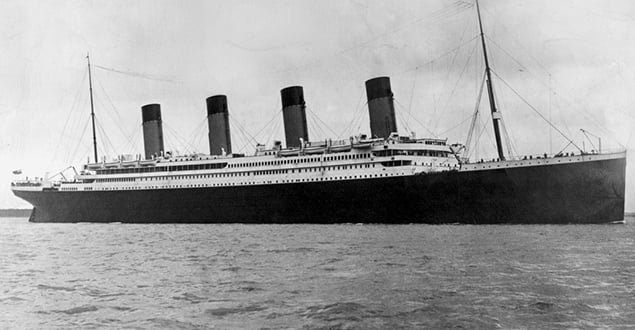 The only ship for which an exception was allowed to the 250 metre rule. The new Titanic may be 19 metres over-length, but she matched the style of Dun Laoghaire Harbour when she came to call in 2048.
The only ship for which an exception was allowed to the 250 metre rule. The new Titanic may be 19 metres over-length, but she matched the style of Dun Laoghaire Harbour when she came to call in 2048.
Admittedly there was one case where the 250 metre limit was disregarded in Dun Laoghaire, but that was after popular clamour to allow the superb re-creation of the Titanic – despite her being 19 metres over-length - to visit just two years ago, in 2048. Mongolian-owned and Vietnamese-built, the new Titanic is a much better piece of work than the previous Australian re-creation job of 2018, and the facts of her ownership and place of build speak volumes about the changes in global business activity and industry patterns we’ve experienced during the first half of the 21st Century.
With the cruise liner area of activity so neatly defined with the compact yet effective berth at St Michael’s, the area immediately to the west was turned over to the needs of a Municipal Watersports Centre. But it proved to be a costly project, with huge financial over-runs, and a take-it-or-leave-it attitude among staff amid criticism that it was classic case of what’s everybody’s business is nobody’s business.
So pride was swallowed, and the Irish National Sailing School was enticed out of its established base in the inner harbour and persuaded to take on the running of the Watersports Centre. While it hasn’t been an easy business to turn round, the local, national and international regard in which it is now held speaks volumes for the dedication and special skills of those involved.
With the INSS ceasing to dominate Coal Harbour activity, the move towards creating the vision of an Inner Harbour Village could be implemented. When you see the Inner Harbour as it is in 2050, with its attractive quayside mix of appropriately-sized characterful houses, restaurants, bars and speciality shops, it’s difficult to remember that less than thirty years ago, most of it was deserted and dead at night.
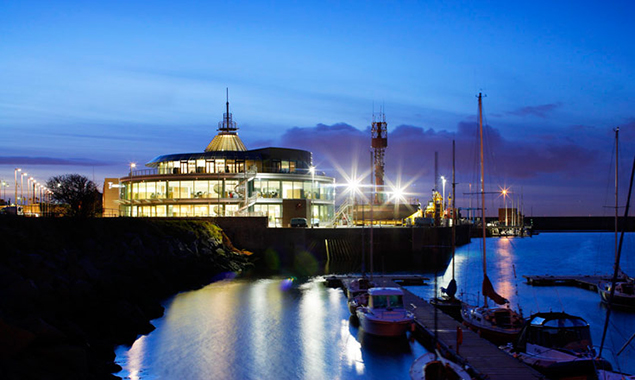 The Irish Lights Centre has effectively become the HQ of Maritime Ireland
The Irish Lights Centre has effectively become the HQ of Maritime Ireland
It took a mighty effort of collective will to make the change possible, but it fitted in well with the revitalization of the entire western end of the Dun Laoghaire waterfront. With increasing computerisation, the reduction of physical space required for its traditional activities meant that a large part of the iconic Irish Lights office building found a new purpose, effectively becoming the HQ of Maritime Ireland, the “go-to centre” for everything to do with boats including the offices of the Irish Sailing Association.
Immediately west of the Irish Lights Building, the old Coastguard Station is now the most easterly part of the “new-old” Inner Harbour Village, while to the north of it the modern MGM boatyard has had its borders more clearly defined. As for the ancient boatyard on the quays around the what used to be known as the Coal Harbour, the traditional users of that have long since been accommodated in the new yard to the west of the Dun Laoghaire Motor Yacht Club where – luxury of luxuries – there is now even access to covered space.
 Roundstone in Connemara. In creating the new Inner Harbour Village, the planners and architects were told to “Think Roundstone, think Baltimore, think Glandore, think Cobh Waterfront”
Roundstone in Connemara. In creating the new Inner Harbour Village, the planners and architects were told to “Think Roundstone, think Baltimore, think Glandore, think Cobh Waterfront”
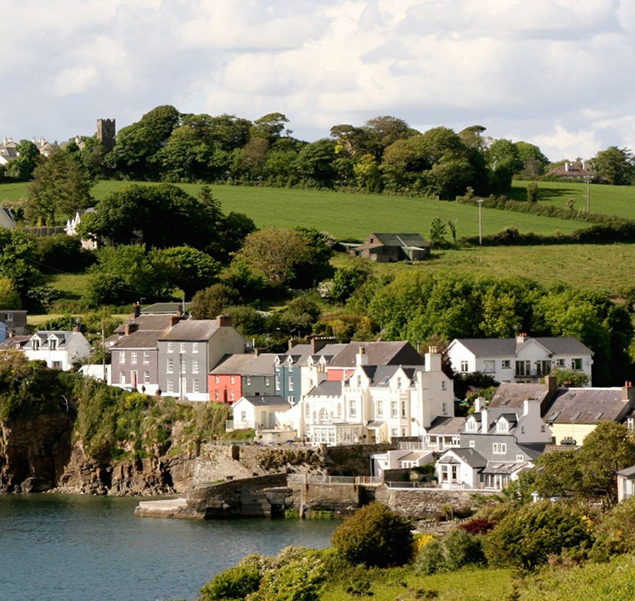 Summercove in Kinsale was another of the inspirations for the new Inner Harbour Village
Summercove in Kinsale was another of the inspirations for the new Inner Harbour Village
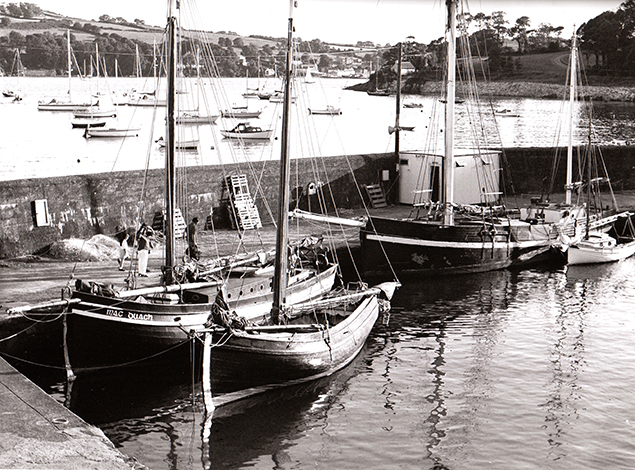 Traditional craft including the Galway Hooker Mac Duach and the trading ketch Ilen in Glandore, one of the inspirations for the concept of the Inner Harbour Vilage in Dun Laoghaire. Photo: W M Nixon
Traditional craft including the Galway Hooker Mac Duach and the trading ketch Ilen in Glandore, one of the inspirations for the concept of the Inner Harbour Vilage in Dun Laoghaire. Photo: W M Nixon
The freed-up quayside space around the Inner Harbour was much larger than casual observers had thought, and the planners and architects were told to “think Roundstone, think Baltimore, think Glandore, think Cobh waterfront”. In other words, a place which was formerly almost a social vacuum became a new yet classic Irish fishing/sailing village which the planners knew would function very well in the Dublin context, as they already had the successful example of Howth’s cosmopolitan West Pier area to see what would work and what wouldn’t.
To add interest to this new and buzzing harbourside “community within a community”, the renowned Skol ar Mor boat-building school in South Brittany was invited to take over premises in the heart of the Inner Harbour Village. This busy Irish offshoot of a French organisaton which first achieved international fame by building classic Irish wooden boats such as a Water Wag, a Shannon One Design, a Howth 17 and a Dublin Bay 24, has now become an “anchor resident” beside Dun Laoghaire’s Inner Harbour. It provides incalculable social benefit with its proven programme of training in classic and traditional skills, while its festive launching ceremonies for the latest creations have become a community highlight.
 The Dublin Bay 24 Periwinkle about to be launched after her re-build by Skol ar Mor in Brittany
The Dublin Bay 24 Periwinkle about to be launched after her re-build by Skol ar Mor in Brittany
 “A magic place to work and learn”. A new Howth 17 being built in Skol ar Mor’s user-friendly premises in south Brittany.
“A magic place to work and learn”. A new Howth 17 being built in Skol ar Mor’s user-friendly premises in south Brittany. Launching day for the creations of Skol ar Mor is a festive community occasion.
Launching day for the creations of Skol ar Mor is a festive community occasion.
Yet in adding this completely new life to the southwest corner of the harbour, the planners didn’t overlook the needs of the more visible southeastern corner. A significant step had been taken when 2016 Olympic Silver Medallist Annalise Murphy agreed that her winning Laser Radial, known as Good Egg and brought home to Ireland from Rio thanks to all sorts of quiet work behind the scenes, should go on permanent display in the Lexicon Library in Dun Laoghaire.
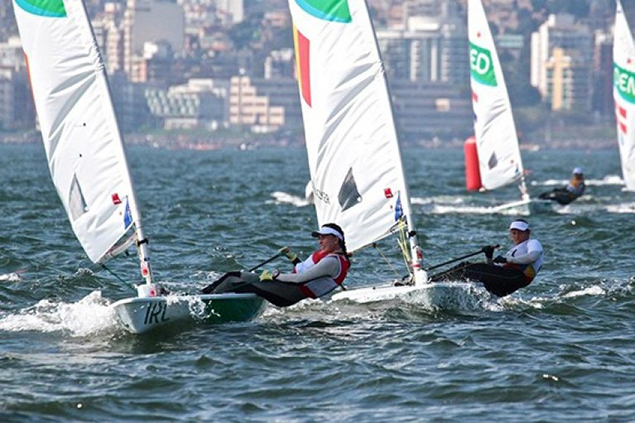 Annalise Murphy’s Medal-winning Laser came home to Ireland and Dun Laoghaire
Annalise Murphy’s Medal-winning Laser came home to Ireland and Dun Laoghaire
It was a gesture which did more to unite the town, the harbour and the sailing world than anyone would have thought possible. And in due course, the powers-that-be agreed that it had been an error not to make the Lexicon’s narrow north-facing wall entirely of glass. This was put right to provide everyone with one of the best views of Dun Laoghaire Harbour and Dublin Bay, with the legendary medal-winning Laser floating serenely suspended within the midst of the vista.
Meanwhile, down on the nearby waterfront, the concept of the expected Diaspora Centre on the Carlisle Pier found itself increasingly out of tune with Dun Laoghaire’s newly upbeat mood. An opinion group, “No More Monuments to Misery”, may have started as very much a minority interest. But support built up surprisingly quickly in favour of the idea that instead of marking yet another sad aspect of our past, it was time to celebrate the here and now, and the best of future prospects, with a bit of a lively museum thrown in.
Thus the Carlisle Pier’s transformation into the stylish Yesterday, Today & Tomorrow has been fascinating to behold. Some of the oddest yet most attractive aspects of Irish life are celebrated here in a changing exhibition which has won international museum awards, yet - as those running it are quick to point out - it’s not really a museum in the traditional sense at all.
 The Dublin Bay 25 Acushla, once owned by the famous Irish tenor John McCormick, is the basis of the popular sailing simulator in the new exhibition centre on Carlisle Pier. Photo courtesy Pierce Purcell
The Dublin Bay 25 Acushla, once owned by the famous Irish tenor John McCormick, is the basis of the popular sailing simulator in the new exhibition centre on Carlisle Pier. Photo courtesy Pierce Purcell
You have to go there to fully appreciate it, and for sailing people the absolute winner is the array of simulators of sailing experience. Admittedly for half the time the America’s Cup racer simulator isn’t working because of technical problems, as it’s too advanced even for the electronic wizardry of 2050. But not to worry, far and away the two most popular simulators are the Dublin Bay 25, based on a class which first raced in 1898, and the Fireball dinghy, which may first have surfaced 87 years ago in 1963, but it can still be found in some enthusiastic pockets of Irish sailing, and it lives forever in Yesterday, Today and Tomorrow in Dun Laoghaire.
That the sailing community and anyone else can enjoy simulated sailing in the exhibition may explain the extraordinary fact that in 2050 the harbour still supports its array of classical waterfront yacht clubs. The barely-remembered economic crisis which started around 2008 and bounced along for at least six years may have brought some of them to the brink. But what is remembered is that when their backs were against the economic wall, the loyal members of the clubs rallied round to save them from a seemingly terminal situation.
 “The more they change, the more they stay the same”. The Royal Irish Yacht Club, built 1851. By 2050, the “permanent adaptability” of the Dun Laoghaire yacht clubs has become a topic for doctoral theses. Photo courtesy VDLR.
“The more they change, the more they stay the same”. The Royal Irish Yacht Club, built 1851. By 2050, the “permanent adaptability” of the Dun Laoghaire yacht clubs has become a topic for doctoral theses. Photo courtesy VDLR.
Of course they’ve had to adjust to changing times. Indeed, the way that Irish yacht clubs can adjust to changing circumstances while still seeming to stay the same has been the topic of dozens of doctoral theses. Whatever, they’re still there, and they’ve even managed to have long-planned roof restorations completed so that the harbour’s multifarious sailing activities can be observed from an improved vantage point.
With the acceptance in 2018 that Dun Laoghaire Harbour should be seen as an amenity like the Phoenix Park rather than something from which every possible cent of income can be squeezed, the healthier atmosphere of a well-run not-for-profit organization permeates the place, and the diversity of modern boats – squeezed complete out of machines at the touch of a button - is reflected in ownership patterns with about half the boats group or club owned, but there’s still a significant cohort of private owners.
The boats themselves are not quite as extreme as had been anticipated thirty years ago. While readily available foiling boats are certainly a significant part of the scene, particularly at the high performance level, in 2050 their impact is much the same as the impact of multi-hulls forty and more years ago. When sensible yet undoubtedly fast multihulls became readily available, their adherents expected everyone to follow. But their unexpected additional costs and accommodation limitations tempered the general enthusiasm, and as foiling boat enthusiasts were to find, the reaction of your ordinary sailing Joe and Josephine was that if they were in such a hurry, why didn’t they just get an aeroplane in the first place? Why not leave the majority of sailors to enjoy themselves in the sheer pleasure of sailing, in which speed plays a part, but it’s only a part - it’s not the be all and end all.
In fact, for ordinary sailors perhaps the most significant change during the first half of the 21st Century has been the growing importance of improved electrical and storage battery technology. For most of us other than classic engine collectors, the internal combustion engine is a distant memory. The necessary basic power for a modern boat, both those with sails and without, is in the new generation of batteries which seem to get smaller and lighter for the same output with every passing year.
It is the greater ease in the use of outboard motors which has been of most benefit to today’s demographic of participants, in which sailing centenarians are now so frequent as scarcely to arouse comment. As for those who harbour nostalgic thoughts about the “good old days” of noisy heavy outboard motors on the transoms of chubby inflatable dinghies, the Yesterday, Today & Tomorrow exhibition includes the complete 2010 “fitting the outboard on the tender” experience, which can be undertaken in its full horror, confident in the knowledge that the onsite permanent staff includes a chiropractor and a physiotherapist.
Looked at overall, it says much about the genius of the engineers and builders of Dun Laoghaire Harbour that in 2050, people see this most artificial of harbours as part of the natural landscape. Thus the instinct to maintain its character is stronger than ever. And there’s no doubt that when a ship or a yacht with classic good looks comes to call, Dun Laoghaire effortlessly provides the perfect setting.
Thus although it is long since forgotten by most, those with very long memories will recall the crazy idea to have a sort of barge permanently moored at the former East Pier Berth in order to provide a “beach experience”. The idea of a crudely artificial swimming pool taking up space within a classic harbour seems unbelievable now, particularly as the old derelict public swimming place was within a stone’s throw. Yet such was the case. But miraculously the threat was seen off, and the East Pier Berth was restored such that once again it is first choice for visiting Tall Ships and vessels which take your breath away, such as the classic three-masted schooner Shenandoah, still going strong after all these years and a very welcome visitor to the old granite pond on Dublin Bay.
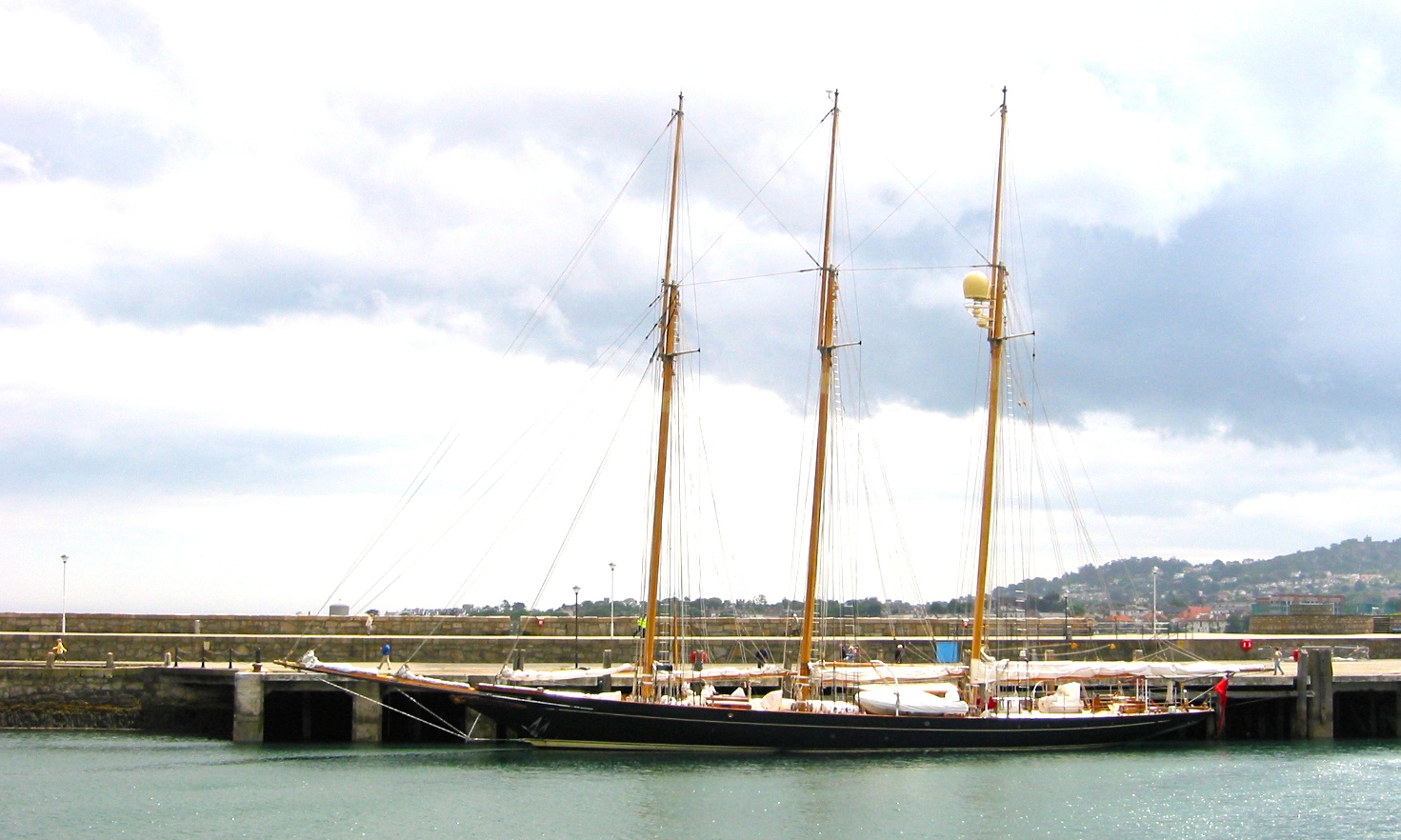 Back where she belongs…..the classic schooner Shenandoah at the east Pier berth in Dun Laoghaire. Photo: W M Nixon
Back where she belongs…..the classic schooner Shenandoah at the east Pier berth in Dun Laoghaire. Photo: W M Nixon
However concludes W M Nixon, as my views are those of someone from somewhere other than Dun Laoghaire, and one who is still very much a visitor when he calls in the knowledge that it is infinitely better to visit it by sea, the visions of one who has been born and bred in Dun Laoghaire sailing, and yet has worldwide experience of sailing and sailing facilities elsewhere, are probably of much more relevance. We’ve been given the following glimpse of 2050 on condition that the visionary remains strictly anonymous….
“As I launch my foil-assisted Olympic dinghy at the Annalise Murphy International Centre of Sailing Excellence (AMICSE), which occupies what used to be the Carlisle Pier, I use the voice recognition scheme to determine the conditions I want to use for this training session at one of the big practice bays that occupy the east side of the pier.
“Summer, Mombasa”, I say, instructing the wave and wind generator to mimic the conditions expected at the 2052 East African Olympic Games (single host cities having been done away with in 2032). Immediately the fans and wave generators kick into action, while the simulator screen displays the Kenyan coast. I train alongside half a dozen sailors from northern Europe, attracted to Dun Laoghaire by the realistic simulation system, the low cost accommodation floatel moored at berth 4, and the gym facilities available in St Michael’s Village, the prestige development overlooking the cruise terminal.
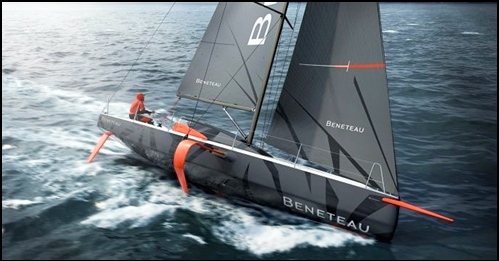 The foil-assisted Beneteau Figaro introduced in 2017 was the first production mono-hull boat with foils, and was of special interest to the many who sought ever more speed. But as with multi-hulls before them, the popularity of the foil-assisted craft was hampered by the problems they posed when berthing, and the unique difficulties they might encounter when sailing
The foil-assisted Beneteau Figaro introduced in 2017 was the first production mono-hull boat with foils, and was of special interest to the many who sought ever more speed. But as with multi-hulls before them, the popularity of the foil-assisted craft was hampered by the problems they posed when berthing, and the unique difficulties they might encounter when sailing
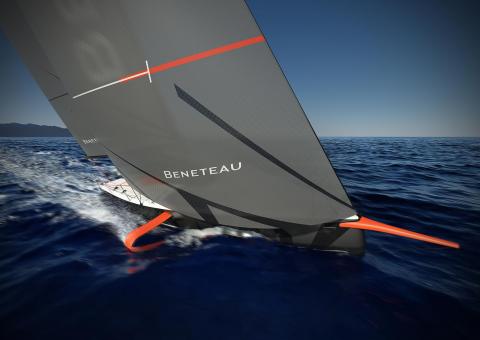 The first Figaro Solo Race Race using the new foil-assisted boats in 2017 vividy illustrated both the advantages and disadvantages of this speed-enhancing equipment.
The first Figaro Solo Race Race using the new foil-assisted boats in 2017 vividy illustrated both the advantages and disadvantages of this speed-enhancing equipment.
After a hard upwind session, I pay a visit to the recently re-located Maritime Museum occupying the premises once used by the National Yacht Club. This innovatively designed building, now connected by a stunning Calatrava bridge to the Lexicon, is linked to the historic vessels that line the East Pier, part of a world famous collection of maritime artefacts.
Time for lunch, and I take the short walk to what used to be the Royal St George Yacht Club, now the home of dinghy sailing in Dun Laoghaire. Working closely with the AMICSE, the Irish National Sailing School have developed a municipal centre that introduces more than 100,000 young people to watersports every year under the governments “Island Nation” programme, whereby every eight year old in the country learns Science, Technology, Engineering and Maths (STEM) through their practical application to sailing.
St Michael’s Village looks well, with the Irish registered cruise ship “Diaspora 1” alongside the berth, her sails furled for the time being. I am reminded as I proceed westwards, that the changes in the harbour have not come without overcoming considerable opposition, particularly on the site of the Royal Irish, now housing the Council Chamber for the combined entity of Dun Laoghaire Rathdown and the harbour.
Perhaps the greatest development has been the merger of all the watersports clubs in Dun Laoghaire and their occupation of former Irish Lights building and the coastguard cottages, providing all the services a modern club should, from crèche to fine dining, fitness to gaming, as well as waterfront access. While the marina has been least amended recently, all the keelboats in the harbour are serviced from the enlarged MGM yard, with the large fleet of one design foiling cats stacked along the north side of the coal quay.
Tonight will see me returning to Dun Laoghaire for some fine dining at the choice of restaurants in the renovated Coal Harbour area, but first I might get a swim in the open air Olympic sized facility at the back of the west pier, where global warming has allowed for year round use without the aid of heating.”

































































